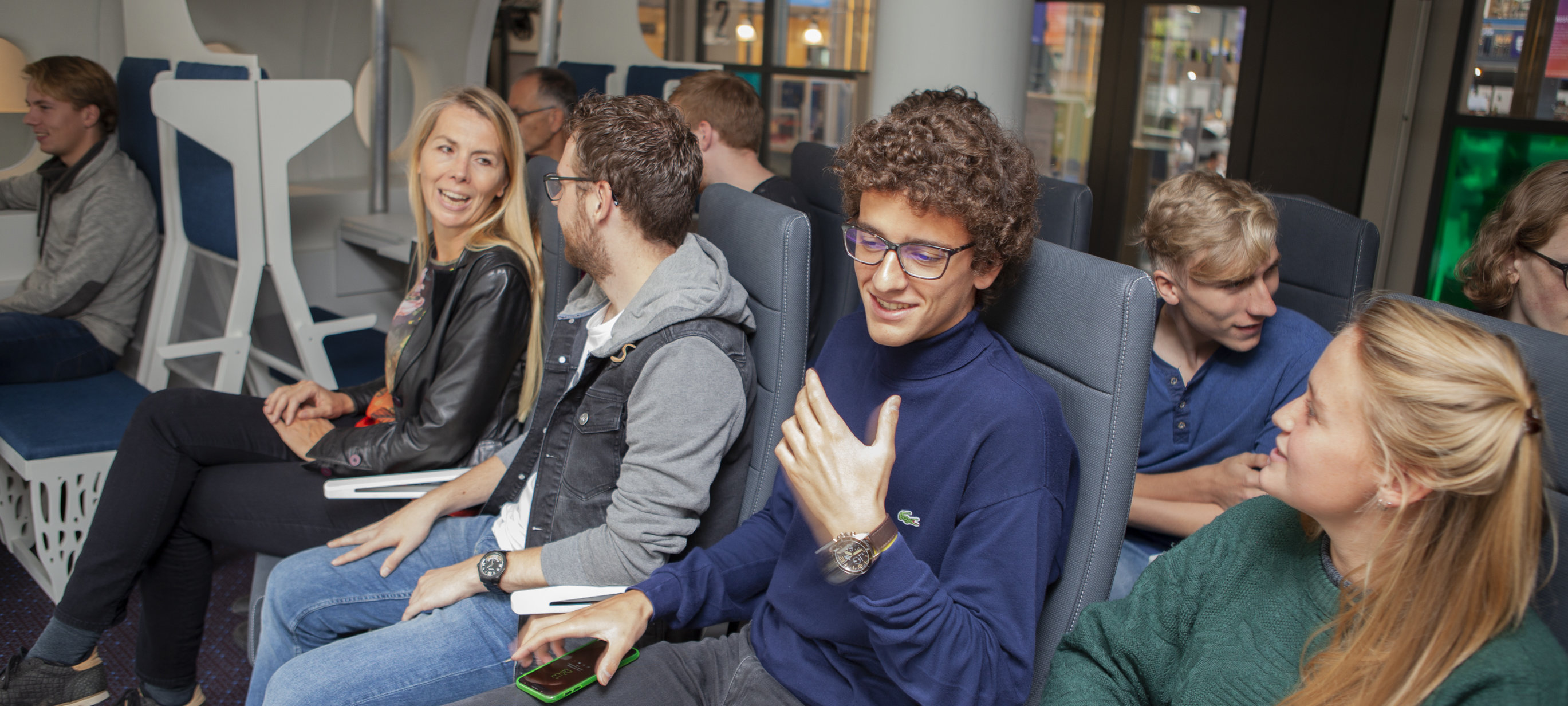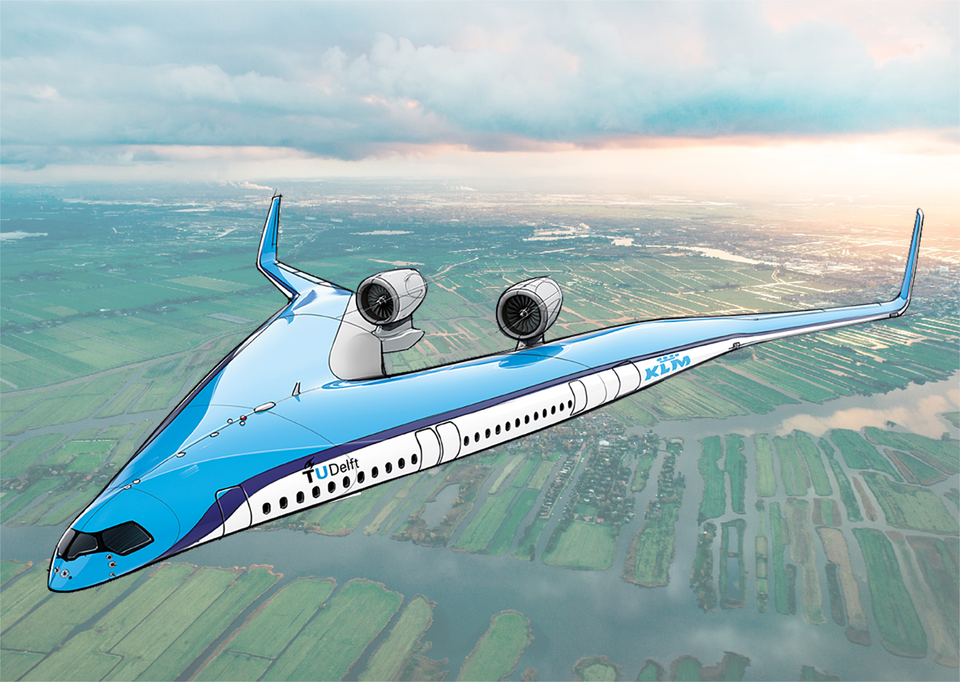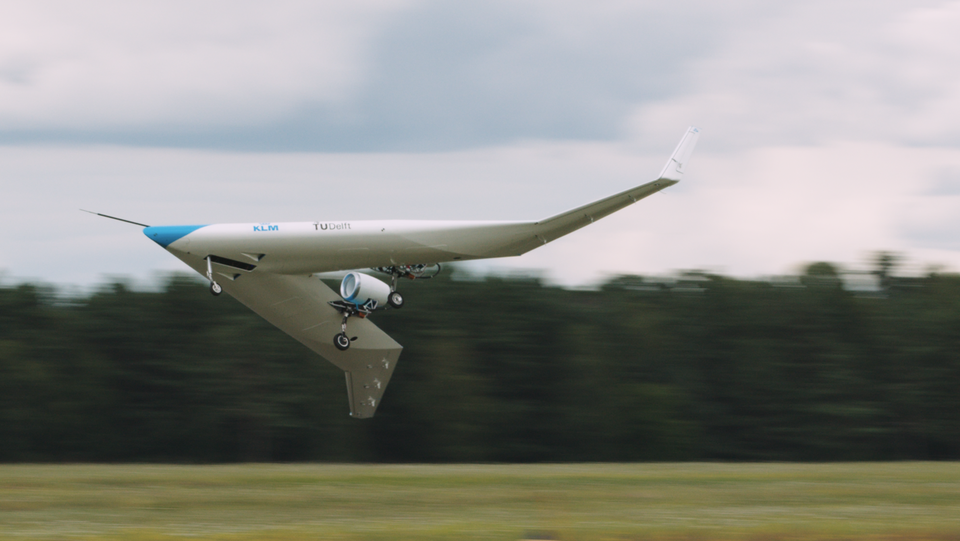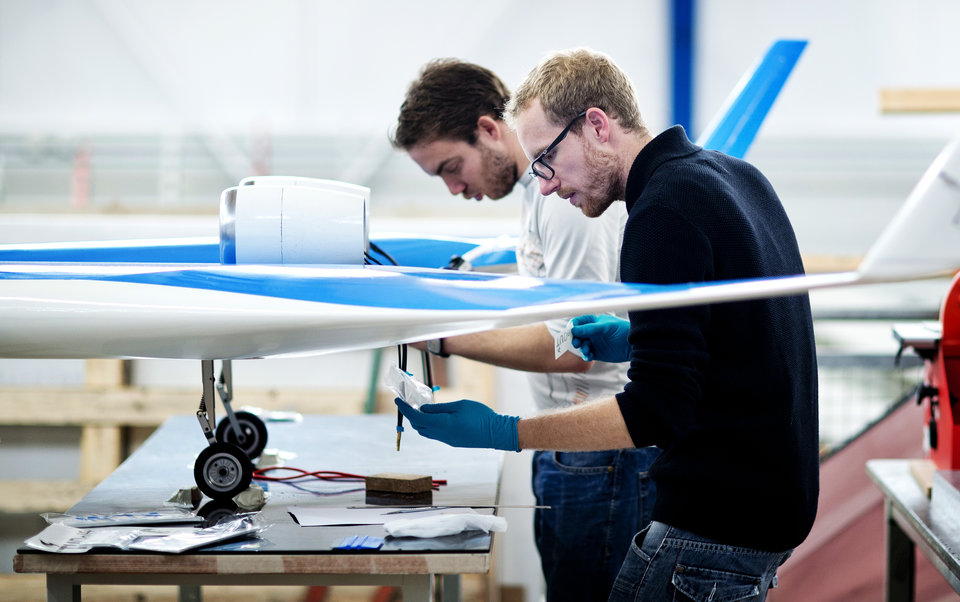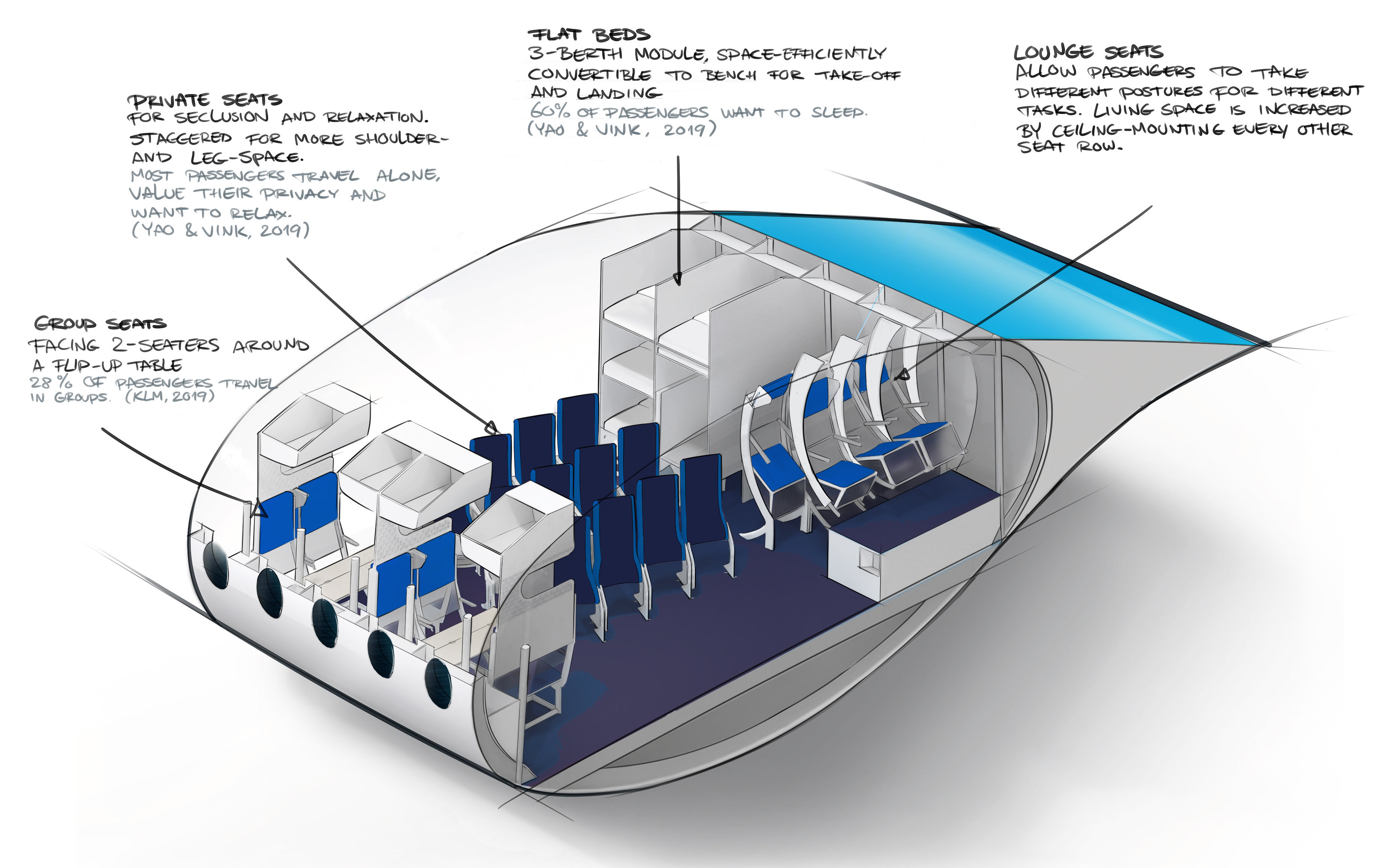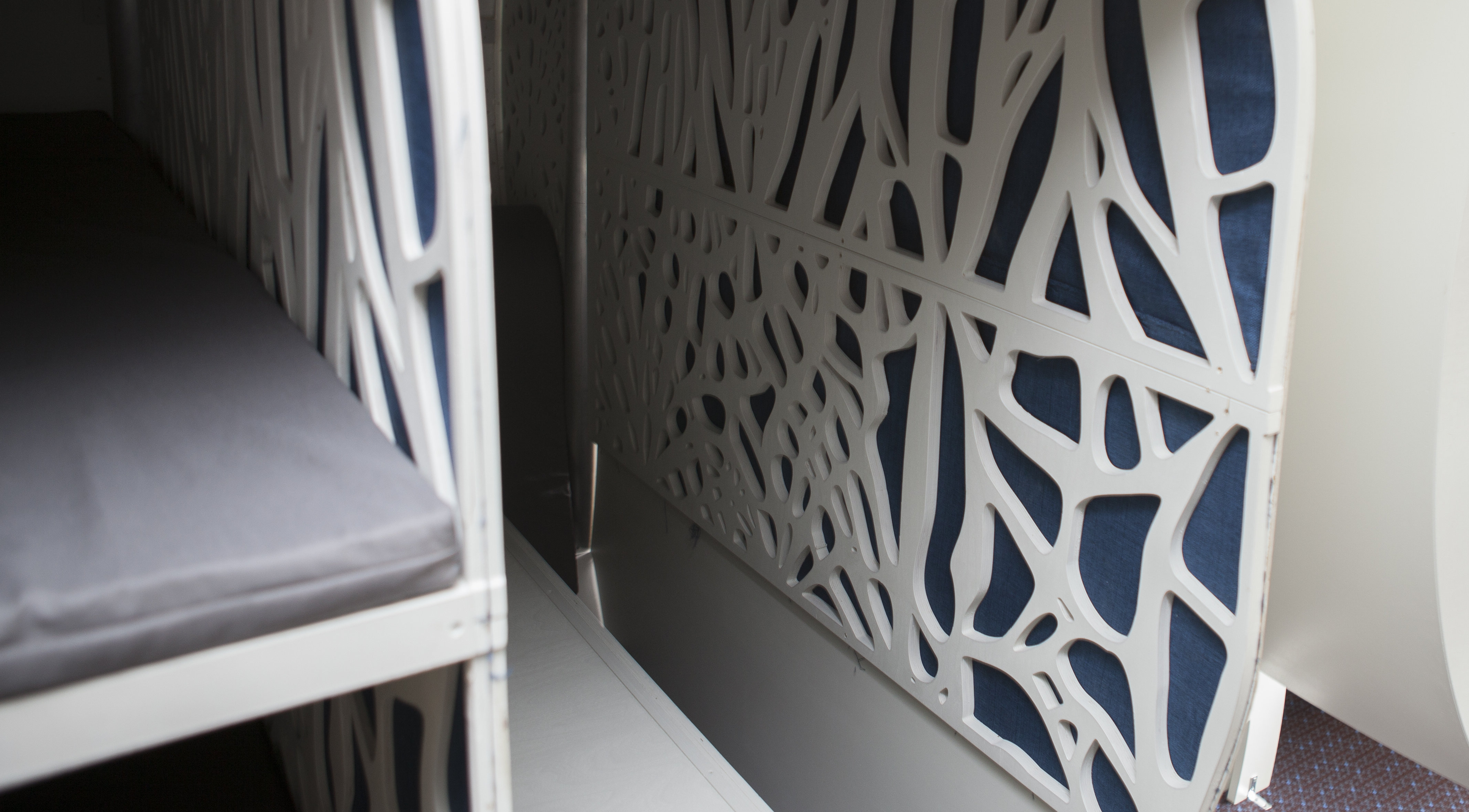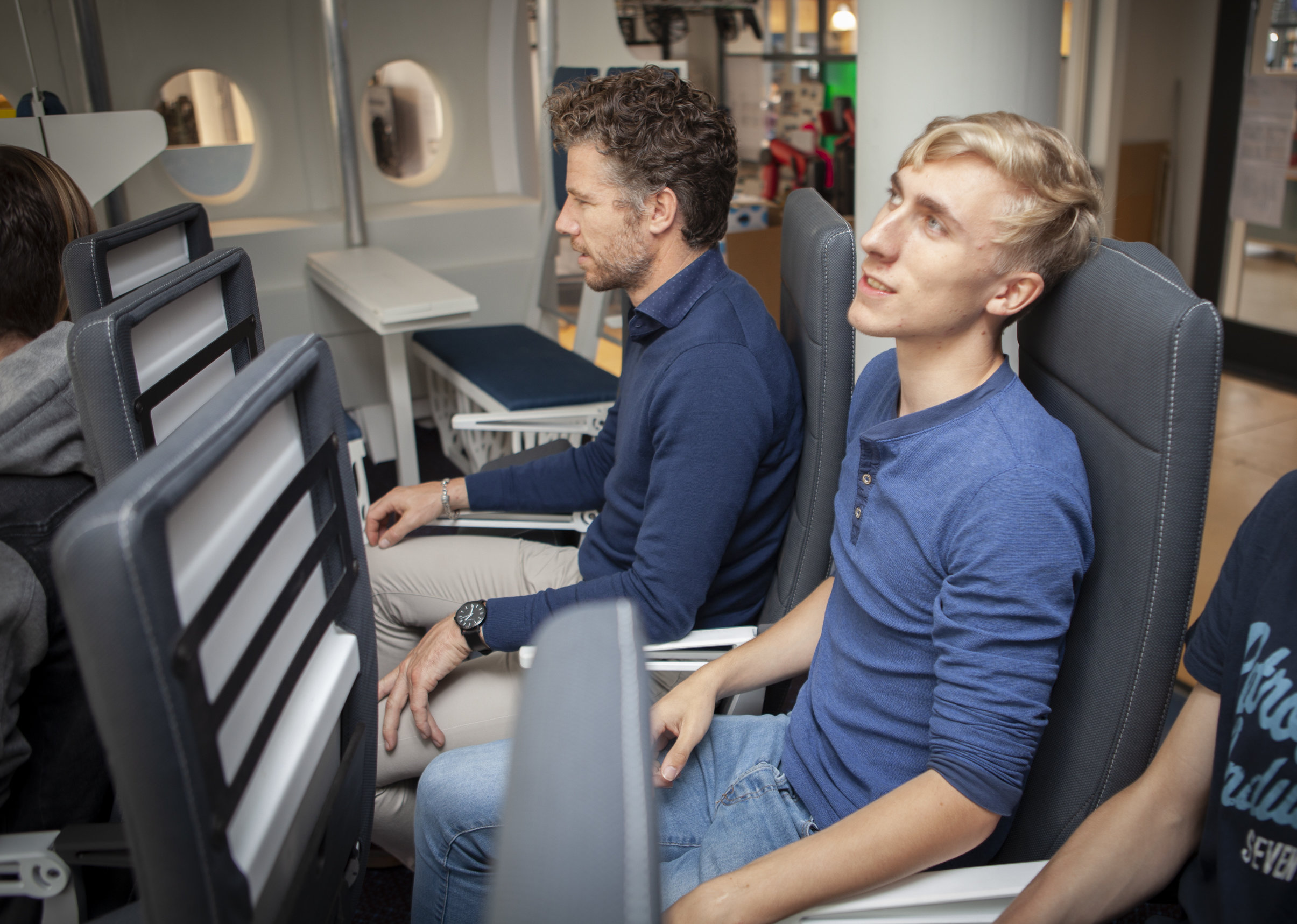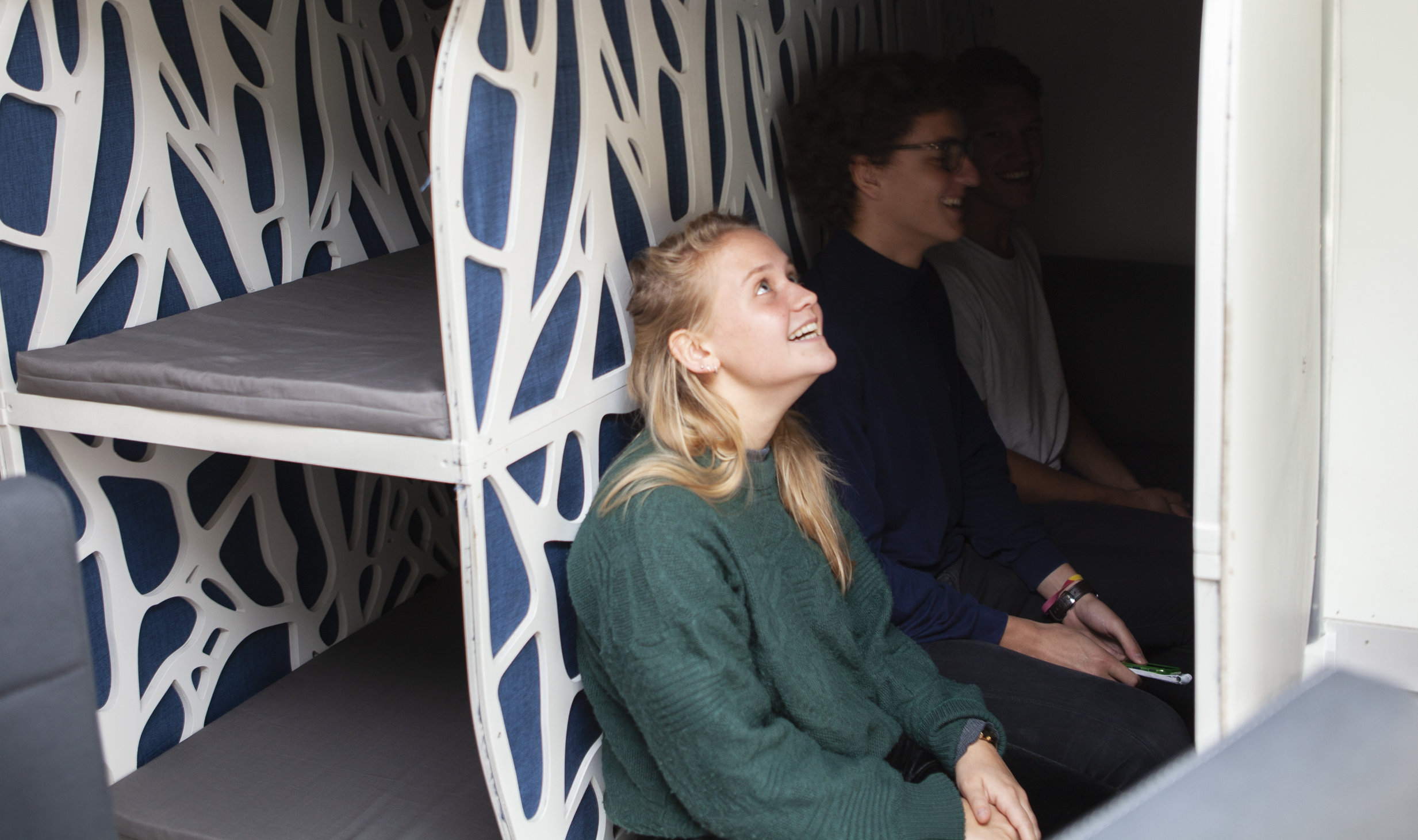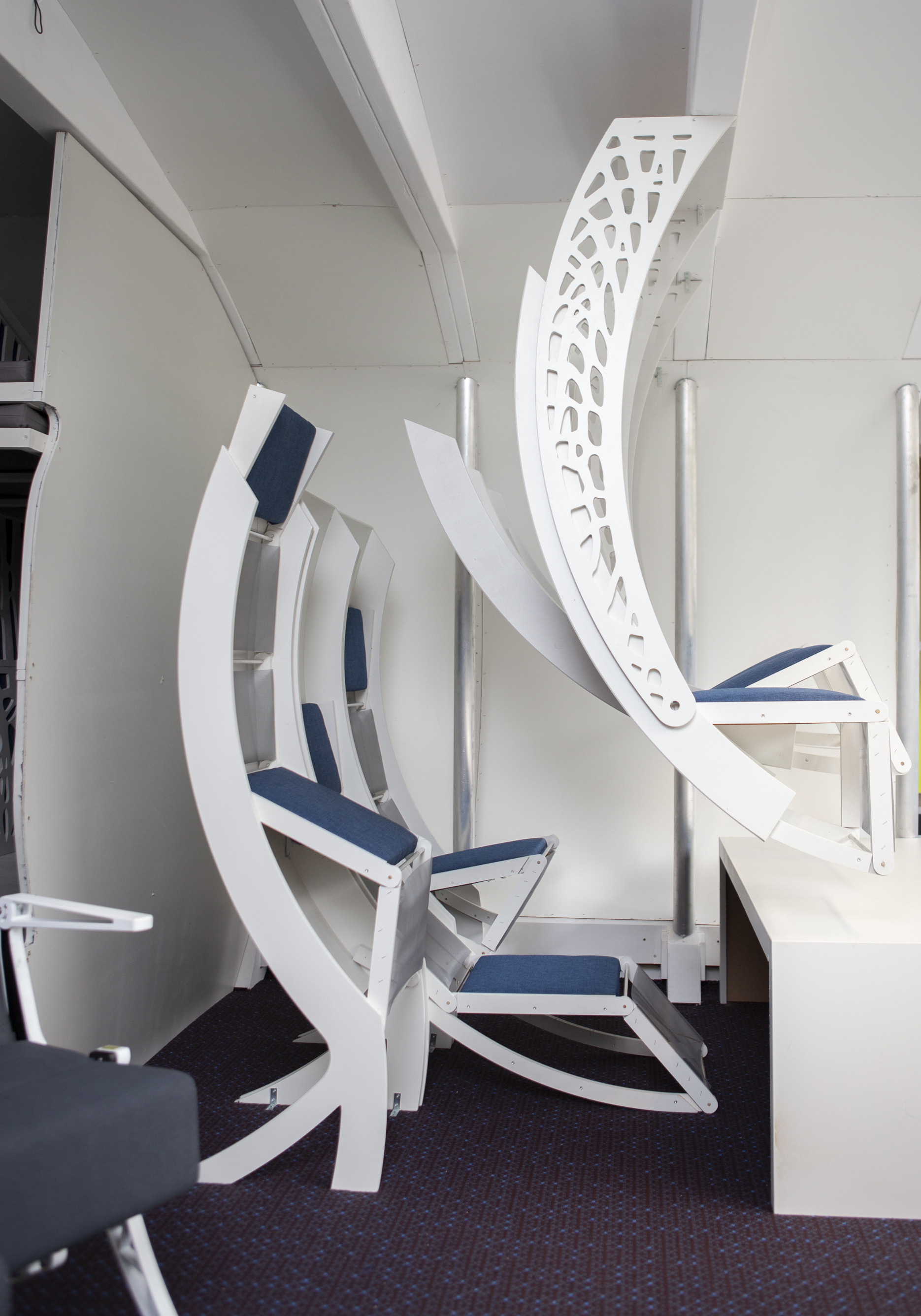The interior of Flying-V has been fully adapted to sitting inside the wings of this radical new airplane design. It boasts the latest insights into passenger comfort and lightweight material use. The goal of the Flying-V interior concept is to improve passenger experience, and at lower weight, but importantly, with similar or higher passenger density. This means that the capacity is still comparable to a current Airbus A350-1000.
Light weight
The exterior of Flying-V ensures less fuel consumption by aircraft design. The light-weight construction of the interior will contribute to this as well. For example, the 'normal' seats used in the new design are 4 kg lighter than the typical seats that are currently used on long-haul flights.
In addition to using light-weight materials, some structural components as well as the furnishing panels are designed using topology optimization. This is a process of computer simulations that iteratively find the best structural layout to robustly support the external loads (e.g. human weight). By eliminating all the material that is not necessary, it results in optimal material usage and even more lightweight design.
Passenger comfort and experience
To improve passenger experience, the interior of the Flying-V pioneers four innovations:
Rows of staggered seats accommodate passengers travelling alone by increasing the living space, namely shoulder- and leg-space, and sense of seclusion. Due to the angle of the cabin to the direction of flight, a fundamental result of the unconventional v-shaped aircraft design, staggering is done by placing each individual seat in the direction of flight, while keeping seat rows perpendicular to the cabin.
Research also shows that 60% of passengers wants to sleep on long-haul flights - however, they do not want to sleep all 12 flying hours. Flying-V’s bed concept therefore consists of a three-berth module that can be converted into a three-seater bench for secure upright seating during take-off and landing. A patent is currently pending for this principle.
Three IDE students, Andrea Riccio, Janita Siriseth and Nard van der Werff, came up with the initial idea for the chaise longue.
In this lay-out, every other seat row is ceiling-mounted; this does not use up additional space. This type of seat allows passengers to take different postures within the same seat. People can sit upright, for example for using a laptop, or alternatively use the space of two seat pitches for lounging or reading.
Further development
The current mockup of Flying-V’s interior displays an integration of these multiple concepts by design students, based on TU Delft’s scientific research so far. It serves as a starting point for further exploration, research and concept development. Studies have already started to evaluate the feasibility and the effect on passenger experience and the designs will be developed further in the future.
Peter Vink
- +31 (0)15 27 81438
- P.Vink@tudelft.nl
-
Room 32-B-3-160
"Sustainable productivity can be reached by adapting environments to human and organisational characteristics."

Jun Wu
- +31 (0)15 27 84858
- j.wu-1@tudelft.nl
- Personal webpage
-
Room 32-B-3-030
"Make things as simple as possible, but not simpler." - Albert Einstein
